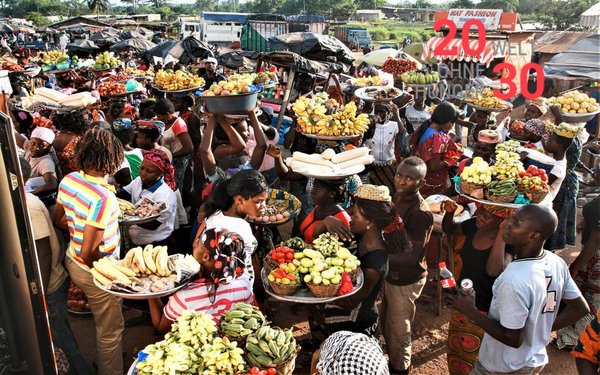 Read this article in French
Read this article in French- Share this article
- Subscribe to our newsletter
Reference values – a building block on the road to social equality
Many companies have acknowledged that it is in their own interest for small-scale producers to receive living incomes. And it is important to know here how high a living wage should be. Complete studies on this are often time-consuming and expensive. But there is a new method to overcome this hurdle. Together with Fairtrade and living wages experts Richard and Martha Anker, GIZ has developed a quick and cost-effective alternative for calculating living wages and incomes around the world. The development was supported by the Global Living Wage Coalition and the Living Income Community of Practice as well as other partners.
The demand for “benchmarks” is growing
The method of quick calculation is particularly helpful in gaining an initial impression of the situation and identifying the sectors in which wages and incomes are particularly low. Benchmarks can also be quickly calculated for countries which are not so easy to travel to. This means that the cost of living can be revealed for conflict zones or regions that are difficult to access.
The number of companies and organisations requesting estimates of living wages and incomes has significantly increased in the last few years. Measuring the differences between what producers in global delivery chains earn and what they and their families need for a decent standard of living is the basis for working with all relevant players to improve the life situation of the people in the Global South. Therefore, these reference values have long become an important component of international cooperation.
A new method: values for regions, not locations
The “Anker” reference values are calculated based on 40 existing Anker studies (11 in Africa, 20 in Asia and 9 in Latin America). They show the average living wage and income for rural and urban areas within each country instead of for a specific location. By analysing past data, reference values will predict how high the living net wage (or take-home pay) is and how high the living income for a certain developing country should be. The margin of error is no more than ten per cent.
Living wages and income are analysed as net values. Compulsory payroll deductions and income taxes, etc., are currently not included. Each year, the reference values are updated to take into account inflation, economic development and changes to the level of income tax.
The first 16 Anker reference values for living wages and incomes as well as reference values with country profiles can now be found on the website of the Global Living Wage Coalition.
In an online training course, you can find out more about the new method for calculating living wages and incomes. The subsequent discussion can be accessed here.
Friederike Martin, Deutsche Gesellschaft für internationale Zusammenarbeit (GIZ) GmbH, Bonn, Germany
Contact: Friederike.Martin@giz.de

This article first appeared at weltohnehunger.org and is part of a media cooperation between and Rural 21 and One World - No Hunger.





Add a comment
Be the First to Comment